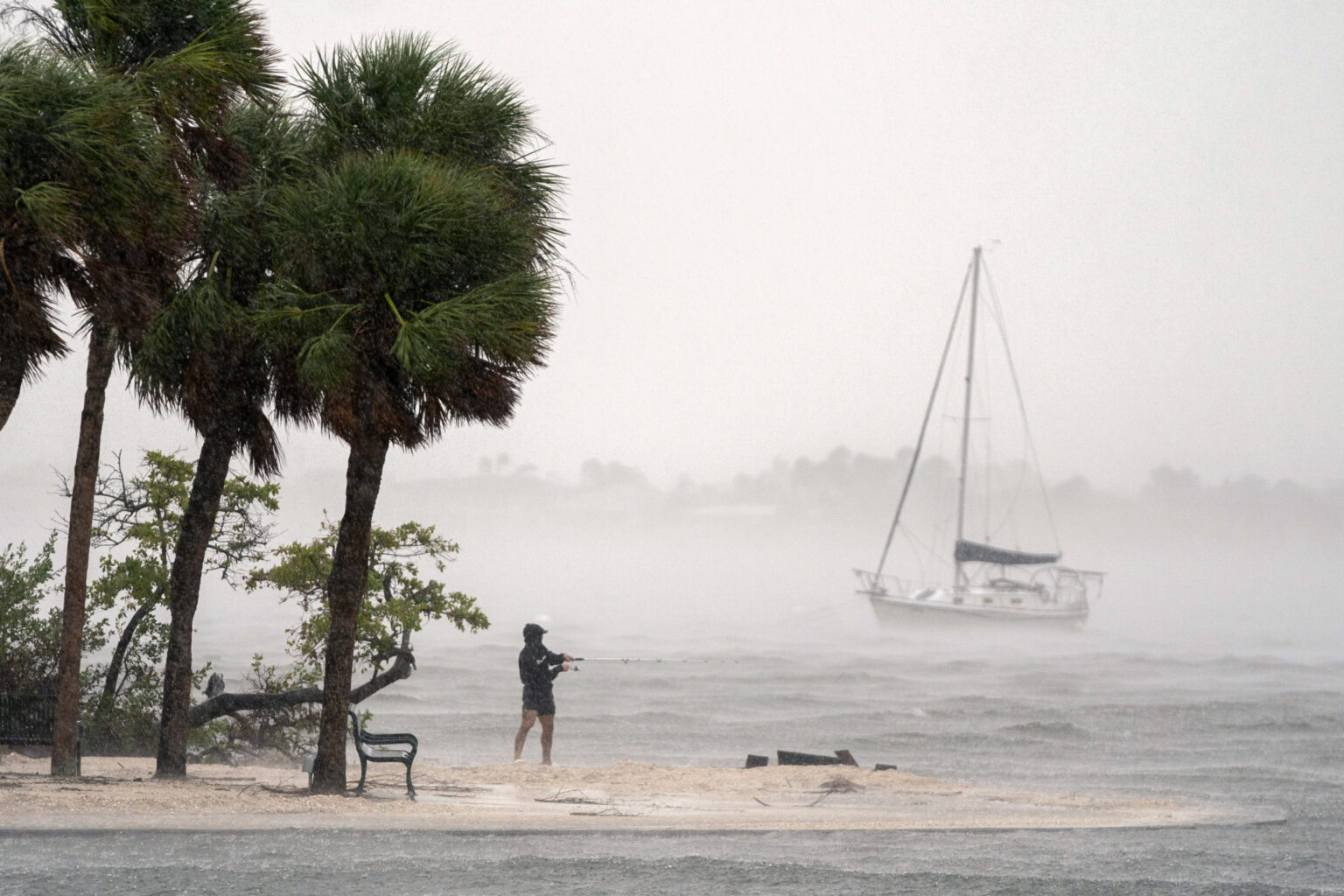As Hurricane Milton barrels into Florida’s western coast, water levels in Tampa are receding from the shoreline, a phenomenon that could later inflict devastating impact.
The event, called a reverse storm surge, also occurred during Hurricane Ian in 2022 and Hurricane Irma in 2017. As heavy winds from Milton whip from land into the Atlantic Ocean, water levels are dropping significantly, exposing a bare sandy shoreline where water usually sits.
But officials are warning residents not to attempt to head out into the receding waterline while the reverse surge occurs, noting that the water will eventually return and could rise quickly.
The Florida Division of Emergency Management on Wednesday night posted to X, formerly Twitter: “STOP: Do not walk out into receding water in Tampa Bay—the water WILL return through storm surge and poses a life-threatening risk.”
Milton made landfall as a Category 3 storm near Siesta Key around 8:30 p.m. ET Wednesday. While the city of Tampa was spared from a head-on strike, the metro area is still expected to receive heavy downpours, flash flooding and possible life-threatening storm surges as the major hurricane tears across Florida and into the ocean.
The National Weather Service (NWS) predicts that peak storm surge inundation could reach 8 to 12 feet above ground in the Tampa Bay area. Less than two weeks ago, when Hurricane Helene hit Florida’s Big Bend region, water levels near Tampa reached 5 to 8 feet high, and 12 people died in the area due to the Category 4 storm’s impact.
Storm surges occur when high wind speeds push water to the shore. But as AccuWeather Meteorologist Scott Homan explained to Newsweek via email on Wednesday, since a Hurricane’s wind blows clockwise, “with Milton passing south of Tampa Bay, winds to the north of the storm are blowing in from the east, pushing water away from the shoreline.” The event usually only occurs for a few hours.
Water levels fluctuated across Tampa Bay on Wednesday. According to observations from the National Oceanic and Atmospheric Administration (NOAA), water levels at the East Bay gauge near downtown Tampa were more than 5 feet below normal levels around 11 p.m. ET—a nearly 4-foot reverse in the span of less than two hours.
The shoreline in St. Petersburg was over 2 feet below normal levels around 11 p.m. ET Wednesday as well. In Clearwater, water levels dropped 3 feet below normal levels around 8:12 p.m. ET, just before Milton was making landfall roughly 70 miles south. By 11 p.m. ET, waters in Clearwater were on the rise and clocked at just 1 1/2 feet from normal levels.
A reverse surge on Wednesday also appeared to be occurring in Cedar Key, more than 100 miles north of Tampa. At 11 p.m. EST, the NOAA tracked water levels at nearly 6 feet below the shoreline’s normal level.
In Fort Myers, the NOAA said its station was experiencing “major flooding,” with water levels exceeding 6 feet as of 11 p.m. ET. Major flooding was also reported in north Naples Bay, with water levels well over 5 feet at 11 p.m.
Storm surge warnings are in effect along Florida’s western and southwestern coast through late Thursday afternoon. NWS has also issued surge warnings near Jacksonville in northeastern Florida.
The National Hurricane Center (NHC) last tracked Milton over Hardee County, moving east-northeast and sustaining wind speeds of up to 105 mph. It “is expected to continue through Thursday, followed by a turn toward the east late Thursday,” the center said.
Read the full article here

